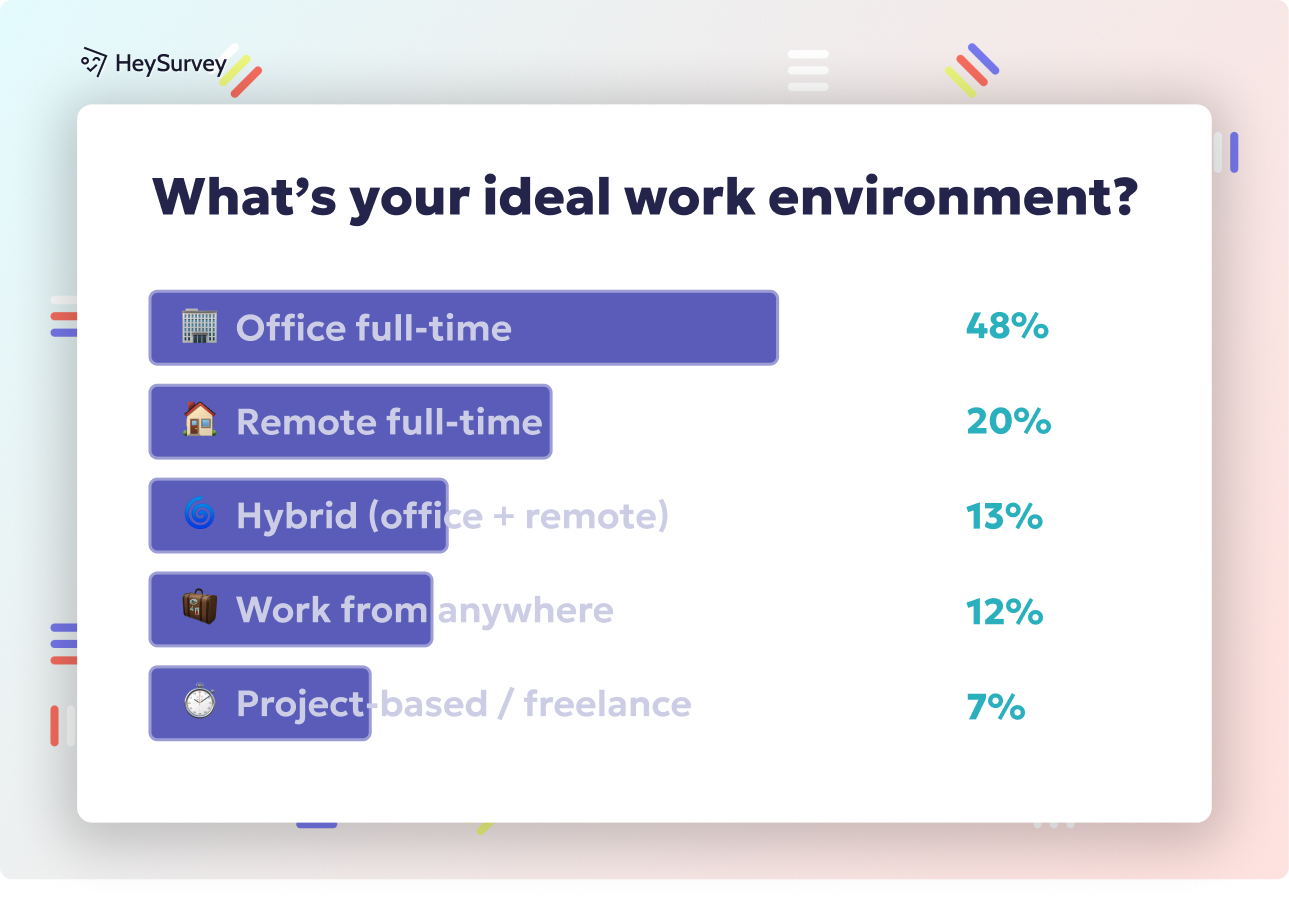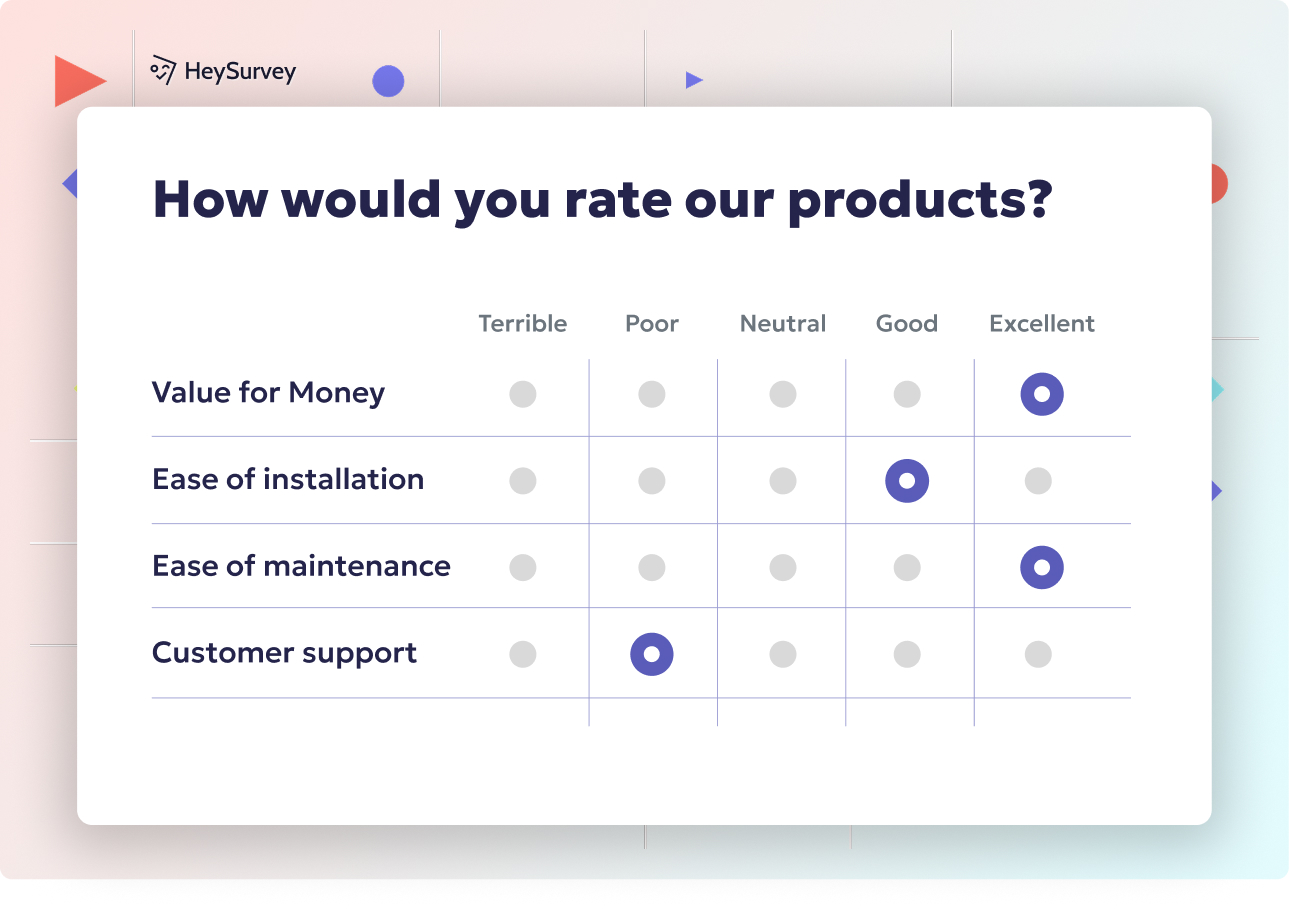31 Frequency Scale Survey Questions for Actionable Insights
Explore how frequency scale survey questions provide 25+ sample questions to capture behaviors across CX, HR, product, health, and training insights.
Frequency scale survey questions—think “Never” to “Always”—are your secret weapon for discovering habitual behaviors and patterns instead of vague feelings. Unlike agreement scales or importance ratings, these scales put a spotlight on how often something happens. They simplify recall for respondents, create quantifiable data, and reveal insights that other question types leave in the dark. From customer support to health checks, frequency questions shine a light on what’s really happening, not just what people wish or imagine—helping industries like CX, HR, healthcare, and education take smarter action.
Customer Experience Frequency Surveys
Why & When to Use This Type
Customer experience frequency surveys are indispensable for understanding recurring touch-points with your brand. Let’s face it, memorable service hiccups or delightful moments usually aren’t “just this one time.” By using frequency scales, you expose not only the existence but the regularity of friction points and successes.
You should slip these questions into post-interaction surveys, quarterly CX reviews, or right before a big journey redesign. This approach helps you find chronic annoyances or super-fans who keep coming back. It’s a great tool for learning not just what happened but how often it happens, which is the real goldmine for process improvements.
Some high-impact moments for deploying these questions include:
- After a customer creates a support ticket or complains on social media
- During scheduled touchpoints that review customer loyalty or satisfaction
- When product teams want to redesign a digital journey or add a new feature
By quantifying the frequency of good and bad interactions, brands can spot patterns that generic “How satisfied were you?” questions completely miss. Knowing how often customers struggle or succeed equips teams to prioritize what really matters.
Sample Questions
How often do you need to contact our support team to resolve an issue?
How frequently do you experience delays when checking out on our website?
How often do our email promotions feel relevant to you?
How frequently do you recommend our brand to friends or colleagues?
How often do you abandon your cart before completing a purchase?
Frequency scale questions in customer experience surveys effectively measure how often customers engage in specific behaviors, providing valuable insights into usage patterns and areas for improvement. (qualtrics.com)
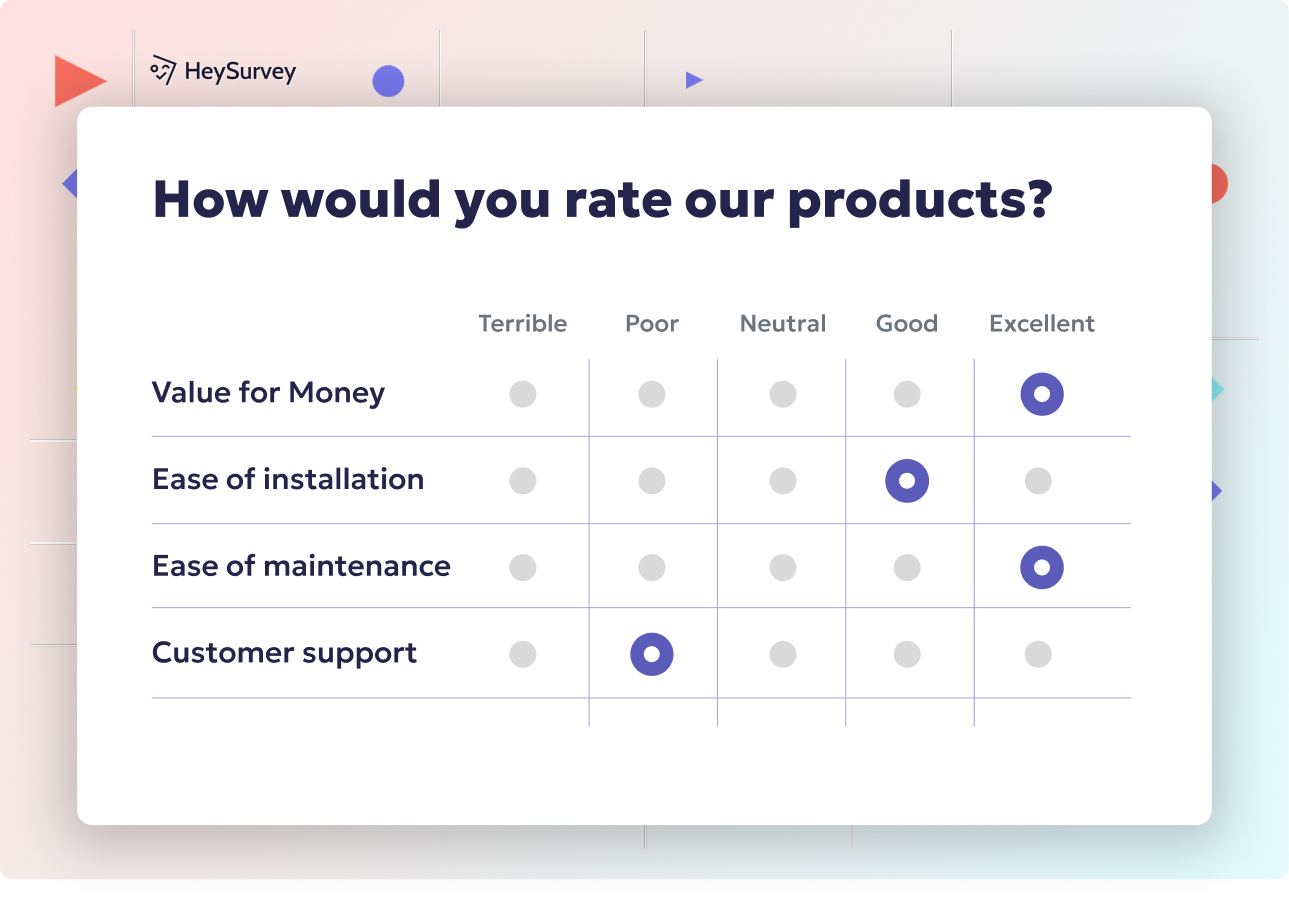
How to Create a Frequency Scale Survey with HeySurvey in 3 Easy Steps
Ready to create your own frequency-scale survey but new to HeySurvey? No worries! Follow these simple steps, and you’ll have your survey up and running in no time. Once you’re done, just hit the button below to start from a ready-made template and get hands-on.
Step 1: Create a New Survey
- Head to HeySurvey’s dashboard and click Create New Survey.
- Choose whether to start from scratch (Empty Sheet) or pick a pre-built template for frequency scales.
- Give your survey a name—something like “Customer Frequency Survey” to keep things neat.
- You’ll land in the Survey Editor, where the magic begins!
Step 2: Add Your Frequency Scale Questions
- Click Add Question at the top or between existing questions.
- For frequency scale queries, select the “Choice” or “Scale” question type.
- Enter your question text, such as “How often do you use our app?”.
- Define your scale labels clearly—think Never, Rarely, Sometimes, Often, Always.
- Mark questions as required if you want to ensure responses.
- Repeat to add all your frequency questions—remember to keep your phrasing focused and specific for best results.
Step 3: Publish Your Survey
- Click the Preview button to see your survey as respondents will.
- Make any final tweaks in the Designer Sidebar or question settings.
- When ready, hit Publish. You’ll need to create or log in to your HeySurvey account here.
- Copy the shareable survey link or embed it on your website.
- Now, sit back and watch those frequency insights roll in!
Bonus Steps to Make Your Survey Shine
- Apply Branding: Upload your company logo to the top left corner via the Branding panel. Your survey will look instantly more professional!
- Define Settings: Set your survey’s start/end dates, limit responses, or add custom redirects after completion within the Settings panel.
- Skip Logic & Branching: Customize respondents’ paths by adding branching. For example, if someone answers “Never” to a key question, you can skip unnecessary follow-ups and keep it short and sweet.
That’s it! You’re now ready to build a clear, actionable frequency scale survey with HeySurvey—no fuss, all insight. Want to jumpstart your survey creation? Use the button below to open a handy template and start customizing right away!
Employee Engagement & Behavior Frequency Surveys
Why & When to Use This Type
When you measure habitual workplace behaviors through frequency scales, you cut through the fluff of one-off mood checks and get right to the soul of your workplace culture. It isn’t about whether an employee likes their job in the moment; it’s about what they consistently do.
Deploy these questions during your annual or bi-annual engagement studies or when you’ve introduced a new HR policy. They’re perfect for capturing how routines change—did feedback loops improve after a new system? Are people collaborating more often since teams shuffled?
Common scenarios for using this approach include:
- Post-policy implementation follow-up (think: hybrid work plans)
- During organization-wide pulse checks
- In onboarding, to compare new hire experiences over time
Frequency questions untangle performance from personality, surfacing whether desirable behaviors (like recognition or feedback) are lived realities or just words on the intranet. These insights help HR and leaders move from nice-sounding values to actual, repeatable action.
Sample Questions
How often do you receive constructive feedback from your manager?
How frequently do you feel overwhelmed by your workload?
How often do you collaborate with colleagues from other departments?
How frequently do you participate in optional training sessions?
How often do you recognize a coworker’s achievements?
Organizations conducting annual employee engagement surveys report engagement increases 2.5 times greater than those surveying less frequently. (lsaglobal.com)
Product Usage Frequency Surveys
Why & When to Use This Type
Product teams adore frequency scale surveys because they quantify feature adoption and put actual usage data in your hands. Analytics might tell you a button was clicked, but only a survey tells you how often users actually use key features—and sometimes why.
You should fire off these surveys after onboarding or before major roadmap planning. That’s when you crave real-life user context beyond what your dashboards can track. Are your shiny new features sticky, or are they being ignored after the first week?
There’s magic in situations like:
- A/B testing new features and needing behavioral validation
- Mapping which product elements drive daily, weekly, or monthly return usage
- Understanding power users vs. casual dabblers
Frequency data bridges the gap between digital tracking and user perception, helping you prioritize future dev work and squash annoying bugs users actually care about. It’s how you turn usage trivia into real, actionable insights.
Sample Questions
How often do you use the mobile app offline?
How frequently do you customize your dashboard?
How often do you integrate our product with third-party tools?
How frequently do you consult the in-app help center?
How often do you encounter bugs while performing core tasks?
Health & Wellness Frequency Surveys
Why & When to Use This Type
Health and wellness surveys are all about capturing the rhythm of daily life—think habits, symptoms, and routines rather than dramatic one-time events. Frequency scale questions in this context can fuel preventive care, patient follow-ups, and large-scale health research that actually matters.
You’ll want to use them on patient intake forms, in wellness program check-ins, or during epidemiological research studies. These surveys gauge not just if someone’s living healthy but how regularly they follow recommended habits. This approach reduces memory fog, which often skews “Yes/No” health questionnaires.
Common ways to use these questions might include:
- Baseline patient assessments before a doctor’s appointment or health screening
- Routine check-ins during wellness coaching or challenges
- Tracking symptom trends during clinical trials or public health studies
Frequency scaling helps spot early warning signs or positive streaks. Instead of one-off victories, you learn who’s sustaining change and who’s just flirting with good habits!
Sample Questions
How often do you engage in at least 30 minutes of physical activity?
How frequently do you consume sugary drinks?
How often do you experience shortness of breath during daily activities?
How frequently do you monitor your blood pressure at home?
How often do you feel rested after a night’s sleep?
Frequency terms may offer a slight advantage over intensity terms in self-report rating scales, particularly for longitudinal assessments. (hqlo.biomedcentral.com)
Learning & Training Frequency Surveys
Why & When to Use This Type
In learning and training contexts, frequency scale surveys measure how knowledge sticks and whether people return to use or refresh what they’ve learned. Unlike simple “Did you like the training?” questions, frequency scales help you understand how often participants actually apply new skills in the wild.
You’ll want to roll out these babies right after courses or workshops, or as part of quarterly skill audits. They reveal the heartbeat of lifelong learning—capturing not only what people remember but how habitually they reinforce or share new knowledge.
Frequent use-cases include:
- Post-training effectiveness studies (“Do people really use this?”)
- Ongoing skills audits for compliance or professional development
- After introducing new processes or job tools
Repetitive practice and review are the lifeblood of retention! Frequency surveys ensure you’re not left guessing about long-term impact, surfacing whether new skills are being forgotten or becoming part of daily workflows.
Sample Questions
How often do you apply the skills learned in the recent training to your daily tasks?
How frequently do you revisit course materials for reference?
How often do you seek peer feedback on newly learned techniques?
How frequently do you encounter obstacles that prevent you from applying the training?
How often do you share training insights with your team?
Best Practices: Dos and Don’ts for Crafting Frequency Scale Questions
Crafting effective frequency scale surveys is a bit of an art and a science. Get it right, and you’ll pull out powerful insights; get it wrong, and all you’ll have is noise and confused respondents.
Do keep recall windows realistic. If you ask someone what they did this year, you’ll get a fuzzy answer. Stick to clear timeframes like “in the past month” or “in the last week” to spark genuine recall.
Do align your frequency scale labels with behaviors or measurable timeframes. For example:
- “Never”
- “Rarely”
- “Sometimes”
- “Often”
- “Always”
This set is classic, but sometimes “once a week,” “every day,” or another specific anchor better fits the behavior you’re measuring.
Do pilot-test your questions with a small group, so you can catch awkward wording and dodgy scale anchors. Sometimes you’ll discover almost everyone answers “never” or “always.” If so, fine-tune those questions to avoid ceiling/floor effects that make real analysis impossible.
Don’t mix different behaviors into one question. For example:
- Don’t ask “How often do you call or email support?”—split it into two precise items.
Don’t overload your survey with too many frequency items. Focus on the most actionable behaviors you want to track; more isn’t always merrier.
Do analyze your survey distribution! If you spot clustering at the “always” or “never” ends, it may signal a broken UX, forgotten features, or serious friction points.
Don’t forget mobile usability. Make your scales easy to tap on the go—radio buttons are your best friend for quick answers rather than fiddly dropdowns.
Keep these practices in mind, and you’ll ensure frequency scales drive insightful, actionable research, rather than frustration or muddled data. Aim for clarity, actionable behaviors, and friendly design.
Conclusion – Choosing the Right Frequency Scale for Reliable Insights
Frequency scale questions are the unsung heroes when you need to track real-life behaviors or spot routine patterns. They outshine agreement or importance scales when you care about how often something truly happens. For deeper understanding, pair frequency answers with a few open-text follow-ups to add context. Start piloting these questions now—they might just be the missing link to better decisions. Give our editable templates a whirl or A/B test them in your next survey for the ultimate win!
Related Question Design Surveys

29 Quantitative Survey Research Questions Example for Success
Explore 25+ quantitative survey research questions example with clear explanations and tips for c...
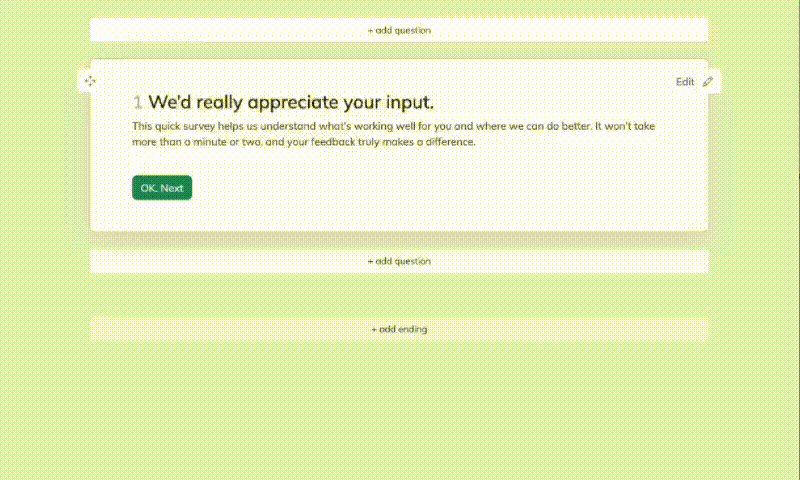
32 Good Survey Question to Boost Your Data Quality
Discover how to craft good survey questions with 30 sample questions across 8 types for better da...
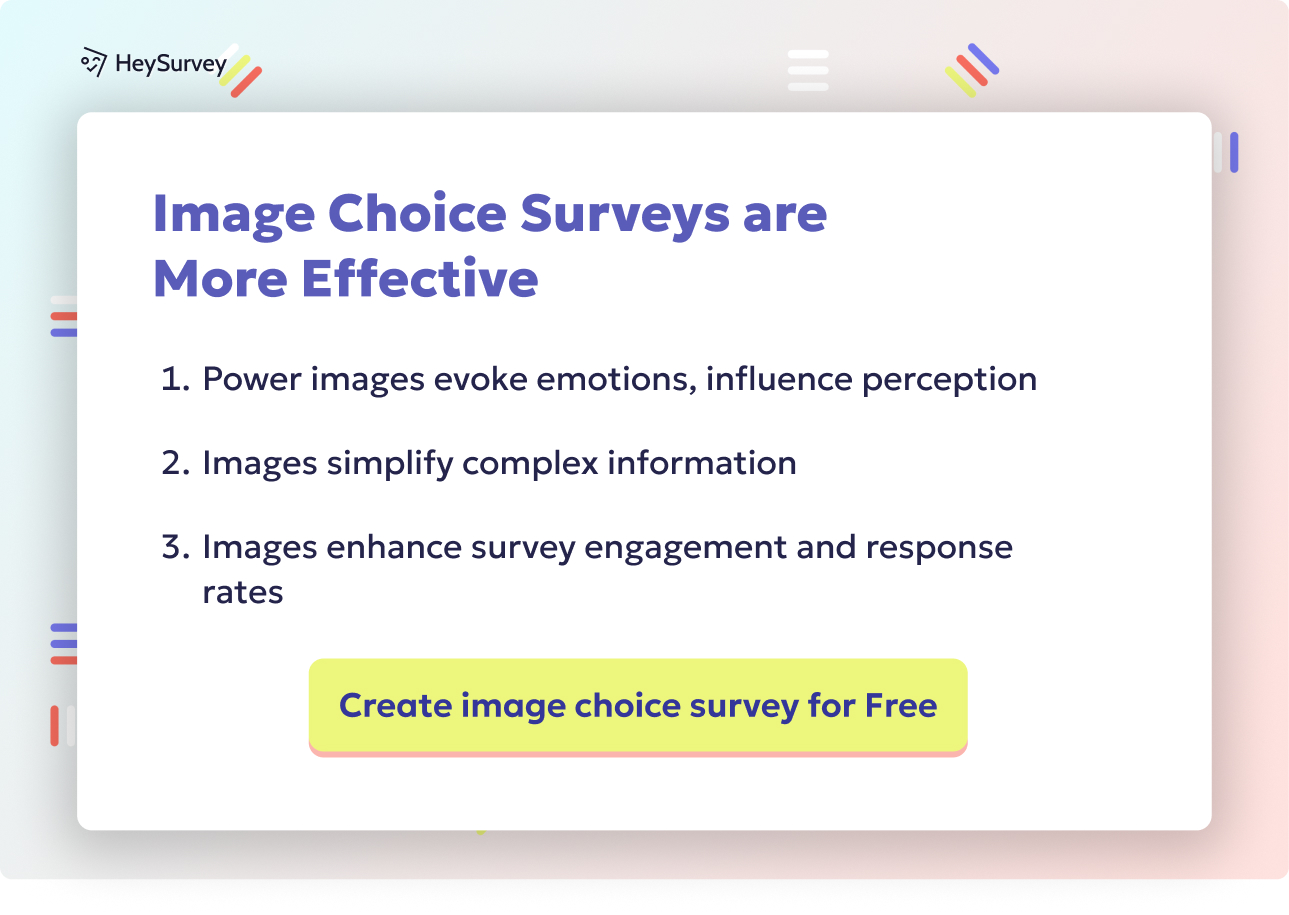
31 Survey Question Mistakes You Need to Avoid Today
Discover 25 common survey questions mistakes with real examples and expert tips to craft clear, u...
